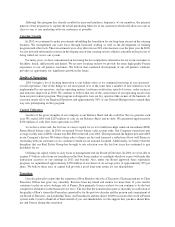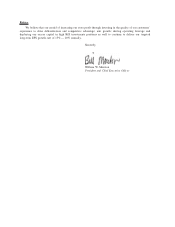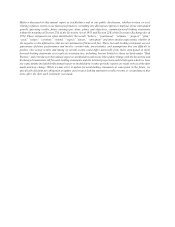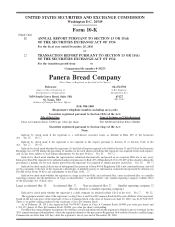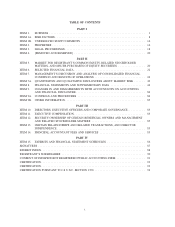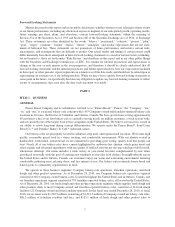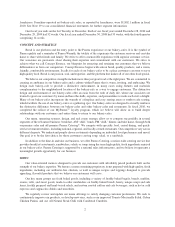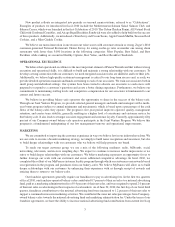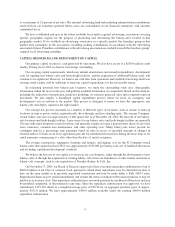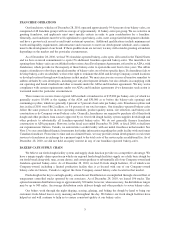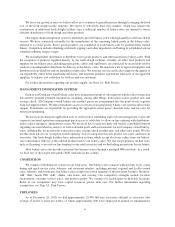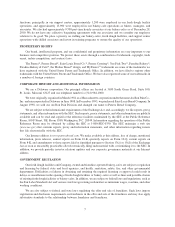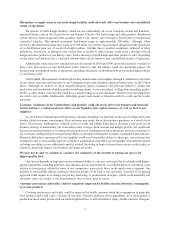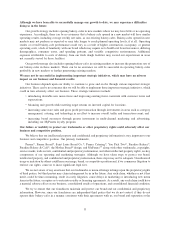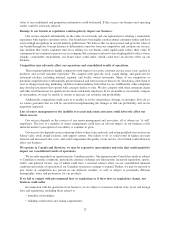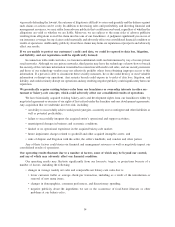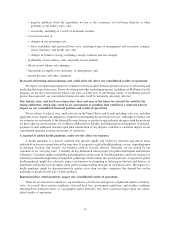Panera Bread 2010 Annual Report Download - page 13
Download and view the complete annual report
Please find page 13 of the 2010 Panera Bread annual report below. You can navigate through the pages in the report by either clicking on the pages listed below, or by using the keyword search tool below to find specific information within the annual report.We focus our growth in areas we believe allow us to continue to gain efficiencies through leveraging the fixed
cost of the fresh dough facility structure. We expect to selectively enter new markets, which may require the
construction of additional fresh dough facilities once a sufficient number of bakery-cafes are opened to ensure
efficient distribution of fresh dough and other products.
Our supply chain management system is intended to provide bakery-cafes with high quality food from reliable
sources. We have contracted externally for the manufacture of the remaining baked goods in the bakery-cafes,
referred to as sweet goods. Sweet goods products are completed at each bakery-cafe by professionally trained
bakers. Completion includes finishing with fresh toppings and other ingredients and baking to established artisan
standards utilizing unique recipes.
We use independent distributors to distribute sweet goods products, and other materials to bakery-cafes. With
the exception of products supplied directly by the fresh dough facilities, virtually all other food products and
supplies for our bakery-cafes, including paper goods, coffee, and smallwares, are contracted by us and delivered by
vendors to an independent distributor for delivery to the bakery-cafes. We maintain a list of approved suppliers and
distributors from which we and our franchisees must select. We leverage our size and scale to improve the quality of
our ingredients, effect better purchasing efficiency, and negotiate purchase agreements with most of our approved
suppliers to achieve cost reduction for both us and our customers.
For further information regarding our product supply, see Item 1A. Risk Factors.
MANAGEMENT INFORMATION SYSTEMS
Each of our Company-owned bakery-cafes have programmed point-of-sale registers which collect transaction
data used to generate pertinent information, including, among other things, transaction counts, product mix, and
average check. All Company-owned bakery-cafe product prices are programmed into the point-of-sale registers
from our support centers. We allow franchisees access to certain of our proprietary bakery-cafe systems and systems
support. Franchisees are responsible for providing the appropriate menu prices, discount rates, and tax rates for
system programming.
We use in-store enterprise application tools to assist in labor scheduling and food cost management, to provide
corporate and retail operations management quick access to retail data, to allow on-line ordering with distributors,
and to reduce managers’ administrative time. We use retail data to generate daily and weekly consolidated reports
regarding sales and other key metrics, as well as detailed profit and loss statements for our Company-owned bakery-
cafes. Additionally, we monitor the transaction count, average check, product mix, and other sales trends. We also
use this retail data in our “exception-based reporting” tools to safeguard our cash, protect our assets, and train our
associates. Our fresh dough facilities have information systems which accept electronic orders from our bakery-
cafes and monitor delivery of the ordered product back to our bakery-cafes. We also use proprietary on-line tools,
such as eLearning, to provide on-line training for our retail associates and on-line baking instructions for our bakers.
Most bakery-cafes also provide customers free Internet access through a managed WiFi network. As a result,
we host one of the largest free public WiFi networks in the country.
COMPETITION
We compete with numerous sources in our trade areas. Our bakery-cafes compete with specialty food, casual
dining and quick service cafes, bakeries, and restaurant retailers, including national, regional and locally-owned
cafes, bakeries, and restaurants. Our bakery-cafes compete in several segments of the restaurant business: breakfast,
AM “chill,” lunch, PM “chill,” dinner, take home, and catering. Our competitive strengths include location,
environment, customer service, price, and product quality. We compete for leased space in desirable locations.
Some of our competitors may have capital resources greater than ours. For further information regarding
competition, see Item 1A. Risk Factors.
EMPLOYEES
As of December 28, 2010, we had approximately 15,900 full-time associates (defined as associates who
average 25 hours or more per week), of whom approximately 800 were employed in general or administrative
6


